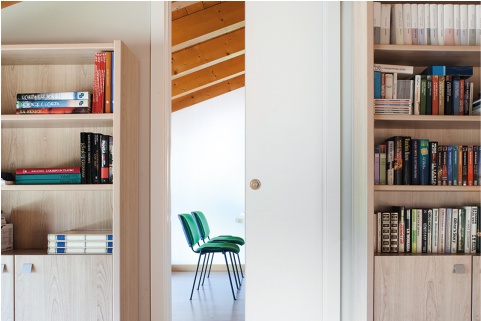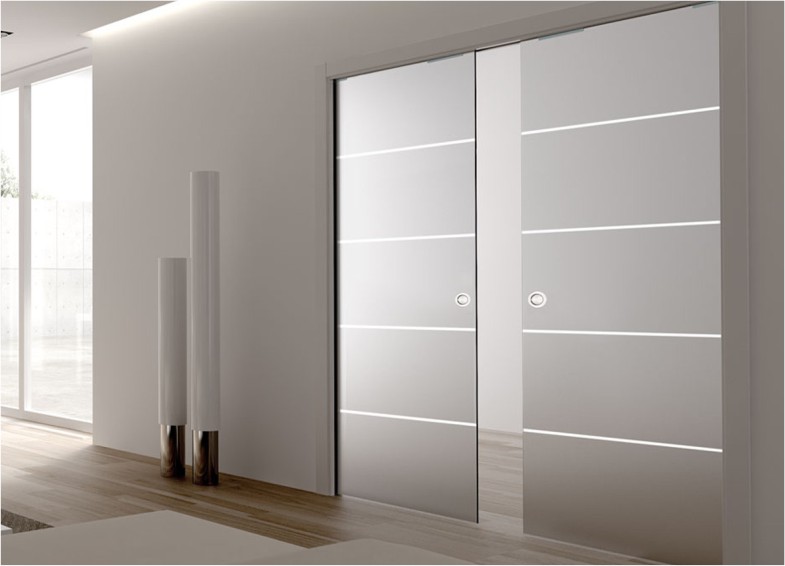What Is A Pocket Door?

The home improvement sector today is a huge industry, based on people being empowered to undertake jobs themselves, to learn new skills and to be ambitious about the types of jobs they can take on. While the DIY sector used to be confined to people who had specific skills, we are increasingly encouraged to start much bigger projects because of the types of products available and how they are designed to be easy-to-install by anyone. The pocket door is a good example of this, and is actually a big factor in being able to re-design a home or workplace and open up significant lifestyle possibilities.
Pocket doors were originally popular in Victorian times and have become something of a design classic. However, they have enjoyed a 21st century renaissance because they suit the hunger for home improvement projects. This is because they are easy to install and have multiple uses which can deliver big lifestyle enhancements.
How does a pocket door work?
When you open a traditional hinged door it will swing into a room in an arc. This means that the area immediately behind the door, and indeed within that arc area, is not usable; it always needs to be kept clear. A pocket door works by sliding the door along an overhead rail, and when it is opened it slides along the same plane into a ‘pocket’ created in the adjacent wall. This ‘pocket’ is a cavity in the wall that needs to be a few inches wider than the door, and this can usually be accommodated within the width confines of a regular stud wall.
The overhead rail that the pocket door runs along is part of a single frame system. The frame is usually a lightweight stainless steel structure that fits together very easily. The frame will be the same height as the door (plus the space needed for the overhead rail) but will be double the width of the door. This is because the frame needs to secure the door when it is in the closed position, and also when it slides into the open position and the door is then hidden from view in the ‘pocket’.
What are the benefits of the pocket door?
For most people, the obvious benefit of the pocket door is the space it immediately creates in a room. Because you are no longer swinging a door into a room, you now free up around ten square feet of usable space. This can make a huge difference, and in many cases creates the space that is needed to change the purpose of a small room, or to make a room multi-purpose. This is why pocket doors have become a very popular feature in home improvement projects.
Another benefit of pocket doors is that they are sleek, modern and minimalist and hence can fit very well in contemporary homes, the pocket door is very neat and unfussy, both when closed and open, while people also like using ‘retro’ features and finding innovative ways to create space. Pocket doors can be supplied as glass doors, double doors and fire doors also, meaning they can be used in multiple types of room around the home or workplace. Once you have installed your pocket door you can also retro-fit pocket door accessories which enhance its functionality, such as soft-closing/anti-slam accessories, self-closing accessories and double-door co-ordination accessories.
How are pocket doors commonly used?
The space created by installing a pocket door opens up a huge amount of possibilities. In the home you can create an en-suite bathroom adjoining a bedroom, you can turn a kids’ playroom into a home office, or you can adapt a guest bedroom to make it an occasional home office too, or adapt a home office to make it an occasional guest bedroom. On the ground floor you can create a downstairs toilet or a utility room.
In the workplace, pocket doors offer the same possibility of creating space and enable small rooms to be converted into offices, particularly if you use glass pocket doors to utilise as much light as possible. You can also convert small spaces into usable rooms for computer servers, small canteens, a photocopier room or for storage.
It is sometimes difficult to envisage the difference a pocket door can make, but the extra bit of space it creates can be the solution to being able to fit a shower and a sink into a small space, or a desk and a chair. As a result it is clear to see why pocket doors have become so popular in the home improvement sector, because with minimal outlay and installation work you can transform a home and make considerable lifestyle enhancements which otherwise might require something like an extension or a loft conversion. In summary, this means that the pocket door is one of the most cost-effective home improvement ideas currently on the market.